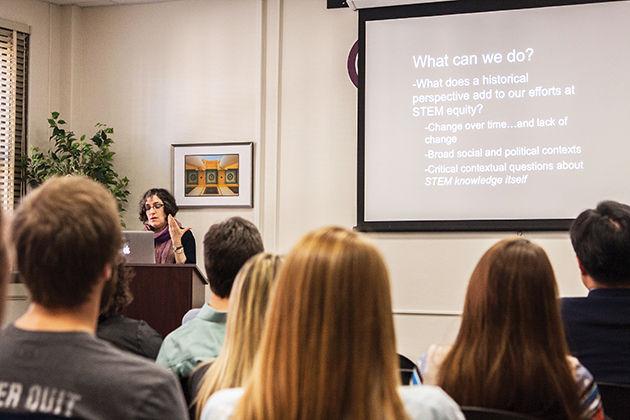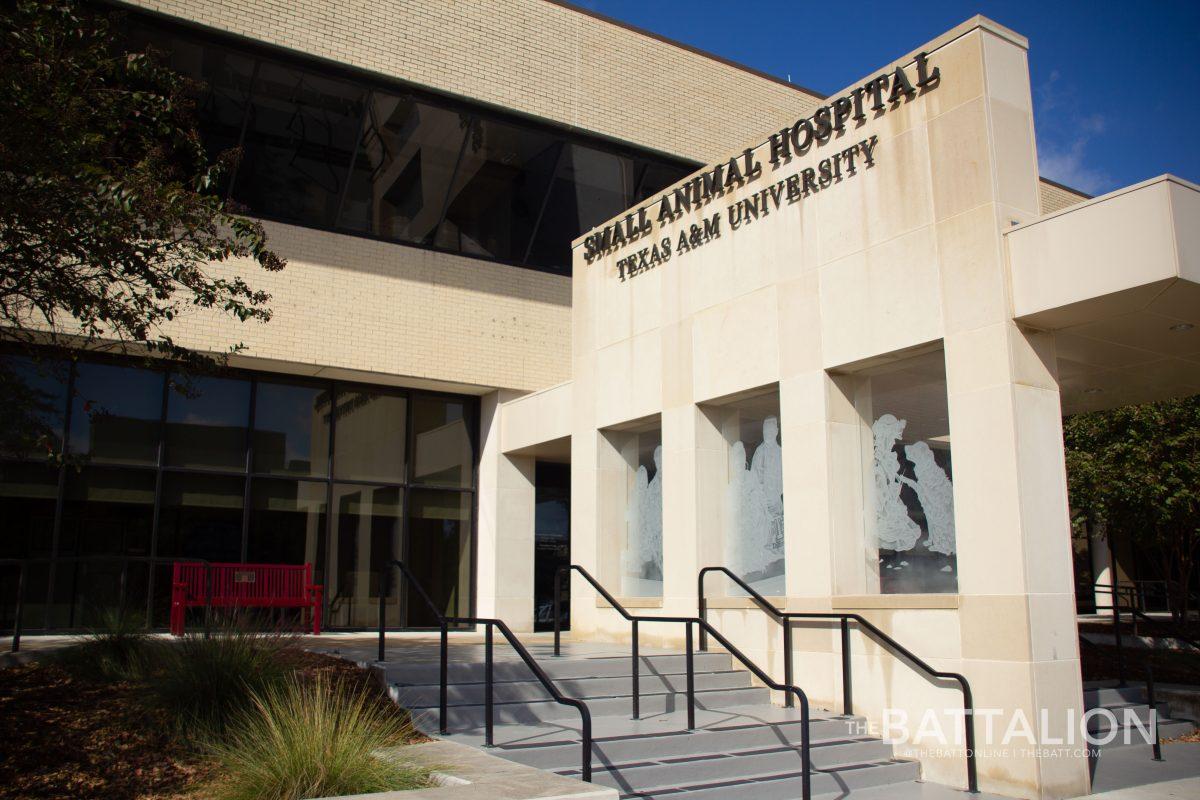A look into many engineering classrooms reveals something beyond the physics and math covering the whiteboards — an imbalance in gender and minority representation among the students in attendance.
The cause behind this trend was the topic discussed at a lecture titled “Confronting Diversity: The Innovative Minority Inclusion of Texas A&M Engineering” Wednesday, where Drexel University history professor Amy Slaton presented her research. The study she discussed, titled “Race, Rigor, and Selectivity in U.S. Engineering,” examined admissions criteria that prevent black involvement in engineering programs at universities. Both Texas A&M and Texas A&M-Prairie View were used as subjects in the study.
Slaton spoke to an audience of both undergraduate students and fellow professors about her work and A&M’s history with diversity in STEM fields. In her lecture, Slaton said progress has been made, but there are areas that still need improvement.
“It is clear that things have changed,” Slaton said. “We are actually not looking at demographics in engineering in 2015 that look the way that they looked in 1915.”
While she said there has been an improvement in the numbers in the last hundred years, Slaton said they seem to have stagnated in more recent years.
“What’s really interesting to me is with all our talk of diversity in STEM, for all our civil right legislation and all our welcoming climate in American higher education and American workplaces, the number hasn’t really changed,” Slaton said. “It improved in the sixties, and it kind of got stuck.”
Slaton said there is a trap that educational systems often fall into when it comes to diversity in STEM fields — the systems are too often satisfied with simply adding minority groups without considering the support they need and the underlying issues that caused their absence.
“It often becomes a matter of ‘Add women and stir.’ ‘Add black people and stir.’ Add Hispanics and stir.’ Right? ‘Add deaf people and stir,’” Slaton said.
Throughout the lecture Slaton said inclusion is not enough. She said it is the crucial “and stir” step that can make the difference.
As Slaton walked through A&M’s history with diversity, she highlighted the fact that A&M introduced very unique policies in the early 1990s. These policies set up new structures within the educational system, and allowed for students to maintain the identity of both an Aggie and whatever else they identify as. Slaton said, for example, students could choose to be in a course section with other students whose backgrounds were similar to their own. Slaton explained why these policy changes were so out-of-the-norm for the time.
“By the 1990s, this was an idea that was really disappearing,” she said. “It was supposed to be an era where you just did not emphasize identity. That is not how A&M saw things. A&M engineering in the 1990s, under this very unusual Foundation Coalition, made four very bold pedagogical changes, and with all of them expressed that identity matters.”
Kayla Daugherty, history senior, attended the lecture. She said she hopes to use the information Slaton shared when she becomes a teacher.
“Next year I am hoping to be in Austin teaching in a high school, and I will definitely have to think back to this topic and see what steps I can do as a teacher influencing the lives of the future generation to influence them in not only what they are learning in history, but learning how you can take that mask off of , ‘That person looks different than me,’” Daugherty said.










